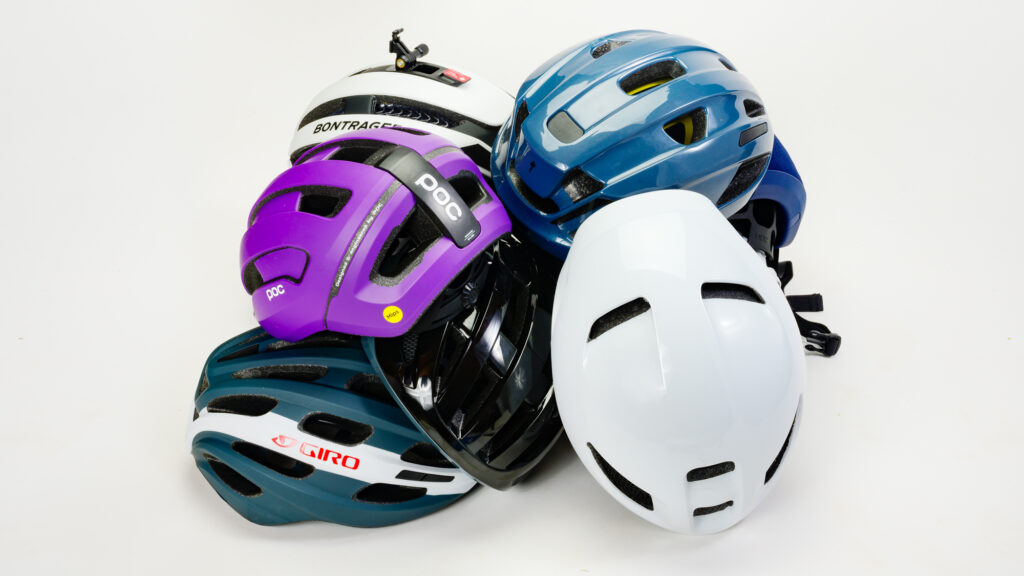The weight limit for skateboarding varies and is often determined by the skateboard manufacturer. Generally, most skateboards have a weight limit of around 220 pounds.
Skateboarding is a fun and challenging activity enjoyed by people of all ages and skill levels. However, it is important to consider weight limits when choosing a skateboard to ensure safety and optimal performance. Most skateboards have a weight limit of around 220 pounds, while some heavy-duty models can support up to 300 pounds or more. Skaters who are above the weight limit risk damaging the board and potentially causing injury to themselves or others. It is also essential to choose the right size and type of skateboard for your skill level and intended use. Whether cruising the streets, carving the ramps, or performing tricks, choosing the right skateboard can make all the difference in your skateboarding experience.

Credit: blog.invgate.com
How To Determine Your Weight Limit
Skateboarding is a popular sport, but it’s essential to know the weight limit of your skateboard to ensure your safety and prolong its use. In this article, we will discuss how to determine your weight limit and explore the factors that affect weight capacity.
Calculating Your Maximum Weight Capacity
When it comes to skateboarding, calculating your maximum weight capacity is straightforward.
- Look for the weight limit information on your skateboard’s packaging or user manual.
- If the weight limit is not included, reach out to the manufacturer or check their website for the information.
- Keep in mind that weight limits vary depending on the type of skateboard, quality, and usage.
Factors That Affect Weight Capacity
Several factors can affect the weight capacity of a skateboard.
- The quality of the skateboard deck, wheels, and bearings can determine its weight capacity.
- The design and construction of the skateboard can also affect its weight capacity.
- Your height, posture, and center of gravity can influence your weight distribution on the skateboard, which can, in turn, impact its maximum weight capacity.
Weight Limit Charts For Various Skateboard Types
Different skateboard types have different weight limits, so it’s important to choose the one that’s right for you.
- longboards: typically have a weight limit of 220-250 pounds.
- cruisers: have a weight limit of around 200 pounds.
- skateboards: have a weight limit of 220 pounds for smaller sizes and 250 pounds for larger ones.
- penny boards: have a weight limit of around 220 pounds.
Determining your weight limit is crucial for a safe and enjoyable skateboarding experience. By considering the factors that affect weight capacity and choosing the right skateboard type with an appropriate weight limit, you’ll get the most out of your skateboard.
Why Staying Within The Weight Limit Is Essential
Skateboarders of all skill levels know the importance of choosing the right equipment to ensure their safety while enjoying the sport. One essential factor to consider is the weight limit of a skateboard. Exceeding the specified weight limit can lead to different issues and risks, including potential damage to the board’s components, diminished or altered skateboard performance, or worst of all, injury.
In this blog post, we concentrate on why staying within the weight limit is crucial for a safe and enjoyable skateboarding experience.
Risks Of Exceeding Weight Limits
Skateboarding is already a relatively risky activity, even for seasoned skateboarders. When a rider exceeds the skateboard’s weight limit, the the board’s stability and reliability will get compromised.
- The skateboard may not maneuver as smoothly or predictably, making it more challenging to control.
- Excess weight can lead to stress fractures or cracks in the skateboard’s deck, increasing the risk of sudden breakage.
- Injuries can occur when a rider’s weight exceeds the weight limit that a skateboard can carry safely. When the board breaks, riders can fall unexpectedly, leading to injuries that can range from minor bruises to more severe fractures.
Impact On Skateboard Performance
Skateboards are designed to work best when the riders maintain a specific weight limit range. The skateboard’s performance, including its speed, balance, and stability, will be affected negatively when the rider exceeds the recommended weight limit.
Here’s what you can expect if you exceed the weight limit:
- Slower speed due to the added weight
- Impaired maneuverability which can negatively affect cornering, pumping up and down, and executing tricks.
- Increased possibility of wheel bites, which occur when the wheels come in contact with the skateboard deck, causing the board to stop or slow down.
Potential Damage To Skateboard Components
Skateboard components – including the deck, bearings, trucks, and wheels – are affected when riders exceed the weight limit. Due to an increased load, skateboard components may start to wear and tear more quickly.
Below are potential damages that riders may experience:
- Cracks, delamination, and breakage on the deck due to excess weight and added pressure.
- With bearings, excessive weight can cause the ball bearings to break down, leading to damage and unnecessary strain on the axle.
- In trucks, heavy riders may experience problems like bent axles, bent hangers, or resistance while turning.
Staying within the recommended weight limit while skateboarding is essential to maintain the board’s reliability and functionality. Going beyond the limit exposes riders to various risks, which might make them fall off the board and sustain an injury. Therefore, skateboarders must take the time to verify the manufacturer’s weight limit when choosing a deck.
Understanding Your Limits when Skateboarding
Skateboarding For Heavier People
Skateboarding is an incredibly thrilling sport that can provide an adrenaline rush like no other. And for heavier people, this thrilling activity is not just for the slender and agile. With the right gear, anyone can be a skateboarder, regardless of their weight.
Here is a breakdown of skateboard options, deck sizes and materials, and the best trucks and wheels for heavier riders.
Skateboard Options For Heavier Riders
Skateboard options for heavier riders vary greatly, and it’s important to choose one that will support your weight properly.
- Longboards: longer, wider boards provide more stability for heavier riders.
- Cruiser boards: these boards have sturdy trucks and larger, softer wheels that allow for a smoother ride.
- Old-school boards: with wider decks and larger wheels, old-school boards can be a great choice for bigger riders.
- Custom boards: you can create a custom board that suits your weight and skateboarding style, consult with a specialist for better direction.
Choosing The Right Deck Size And Material
The deck size and material of your skateboard are crucial factors to consider if you’re a heavier rider.
- Size: consider a board that is at least 8 inches wide and 32 inches long for maximum stability.
- Material: look for a board made of strong, sturdy materials like high-quality maple wood.
Best Trucks And Wheels For Heavier Riders
Trucks and wheels are important components of your skateboard that can handle a heavier rider’s weight effectively.
- Trucks: look for trucks made of durable materials such as aluminum or titanium. Choose trucks that are at least 5 inches wide to prevent wobbling and instability.
- Wheels: choose larger, softer wheels with a diameter of at least 54mm. The larger diameter provides more stability and the softness will absorb shocks more efficiently.
Skateboarding is a fabulous sport that anyone can take part in, regardless of their body weight. By selecting the right gear, heavier riders can enjoy the adrenaline rush of skateboarding without any discomfort or safety concerns. His is why it’s essential to keep in mind the crucial factors discussed above when choosing a skateboard, from the deck size and material to the wheels and trucks that will provide a sturdy and enjoyable ride.
Tips For Staying Safe While Skateboarding
Skateboarding is an amazing sport and a fantastic mode of transportation. However, skateboarding can get dangerous if you don’t follow some safety guidelines. It doesn’t matter what your weight is; how you ride safely is crucial. In this post, you will learn about tips for staying safe while skateboarding so that you can have fun without getting into trouble.
Proper Riding Technique
Riding safely and comfortably is important to keep your balance and prevent accidents.
- Keep your knees slightly bent to maintain your balance when riding.
- Lean forward when going downhill and lean backward when slowing down or stopping.
- Use your feet to control the board’s speed and direction.
- Keep your shoulders and chest facing forward; this way, you avoid spinning and keep balance.
Wearing Appropriate Safety Gear
Protecting the head, knees, and elbows while skateboarding is a must. Many safety gear items are available in the market, such as helmets, knee pads, and elbow pads.
- Always wear a helmet that fits correctly. It should never obstruct your vision.
- Wear knee and elbow pads that fit correctly and are easy to wear and remove.
- If you’re new to skateboarding, consider wearing wrist guards, too.
- Choose high-quality, sturdy safety gear and replace them once they’re damaged.
Staying Within Your Skill Level
Skateboarding is a gradual learning process. Do not attempt any tricks or stunts that you’re not comfortable with; instead, gradually increase the difficulty and level up your skills over time.
- Know your limits and don’t ride outside of your comfort zone.
- Learn new tricks in a safe and controlled environment under adult supervision.
- Invest time in practicing the basics before moving on to more complex maneuvers.
- Do not try tricks that you’re not comfortable with, or you don’t know how to execute correctly.
Proper Maintenance Of Your Skateboard
Maintaining your skateboard is essential to keep it in good condition and prevent accidents.
- Check the hardware regularly, including nuts, bolts, and screws, to ensure they’re tight.
- Check your skateboard’s wheels and make sure they’re not worn out or damaged.
- Lubricate your skateboard’s bearings regularly to ensure smooth performance.
- Replace any worn out or damaged parts as soon as possible.
Skateboarding is a fun and enjoyable activity, but it’s also important to know how to ride safely. By adhering to these tips, you can have a great time and reduce the chances of harming yourself. Remember, it’s always better to be safe than sorry.
Conclusion
Skateboarding is a thrilling sport enjoyed by many, but it’s essential to understand the importance of weight limits when engaging in this activity. While there is no exact weight limit for skateboarding, it’s wise to follow the manufacturer’s recommendations and use common sense.
Being overweight can significantly impact the skateboard’s durability, the rider’s stability, and ultimately lead to accidents and injuries. Choosing the right board is critical, and it’s essential to understand the skateboard’s max weight capacity. Skateboarding is all about having fun, but it’s equally vital to be safe.
Therefore, it’s recommended that riders keep their weight under the manufacturer’s recommendations and ensure that the skateboard is in excellent condition. By following weight limit guidelines and taking necessary precautions, riders can reduce the risk of accidents and enjoy the sport to the fullest while staying safe.



